Tiffin Tuesday - Fruits of the Forest
Tuesday, July 31, 2007
Posted by jokergirl@wererabbits
Main course: Spanish potato tortilla on a bed of salad. Black garlic olives.
Side dish: Cherry tomato salad with red onion and fresh basil; green garlic olive.
Dessert: Freshly-picked forest berries on yoghurt, all frozen to serve as ice pack (this goes back into the freezer until tomorrow).

I love summer! Not just because it's warm and nice but it's also the season of fruits, herbs and berrypicking. My grandmother used to go to the forest with me to pick berries and I plan to do the same with my children and grandchildren, if I ever have any. It's so important to know where the food comes from when it's not bought in the supermarket. How to live off the land and what delicacies there are hiding in our own forests and meadows is starting to become a sadly forgotten art, and even though I grew up mostly in a city myself it saddens me when I meet people my age who can barely tell a chestnut tree from a cherry tree and would never eat anything straight from the forest. (I say to hell with hygiene, forest berries taste the best when fresh from the branch.)
Today I went to the forest in search of mushrooms. I didn't find any yet, although the weather was perfect - I guess there were too many mushroom pickers before me! - but I did find an abundance of wild raspberries, forest strawberries and blueberries. I'm especially happy about the forest strawberries (or smultron as they are called in Swedish) because they taste so much better than the giant strawberries you can buy in supermarkets. Talk about a taste explosion in every single, tiny berry you pick. I had a hard time picking any for later and not putting every berry in my mouth immediately!
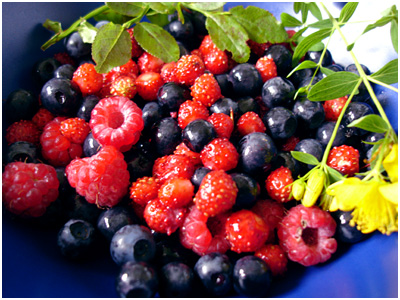
It is no coincidence or photographic accessorizing though that amidst all the berries, there is also a flower. When I went out to the forest with my grandmother, we did not only pick berries and mushrooms!
The yellow flower giving such a pretty contrast to the red and blue berries is called St. John's Wort or in German, Johanniskraut and can be used dried as a tea, or steeped in alcohol as an antibiotic tincture that speeds up wound healing. It is rumoured to be good against mild depressions even!
When I saw it growing wild and abundant in the forests close to here, I remembered how we used to collect it and decided to pick and dry some of my own. Herbal medicine, and knowledge of wild herbs is sadly a vanishing art here in Europe, and I am very interested in keeping the knowledge of living off the land alive, at least as little as I ever learned about it! I'm planning to write more articles on vanishing vegetable sorts and herbs on this blog as I stumble across them. Did you know, for example, that you can eat dandelion leaves as a salad in spring, if you pick them very young and before they grow flowers? (I plan to sneak that into a bento next spring, if I get the chance...)
Are you interested in contributing to The Daily Tiffin? Drop us an email: blogmeeta@gmail.com. We look forward to hearing your ideas.
This Post was written by jokergirl from Were Rabbits
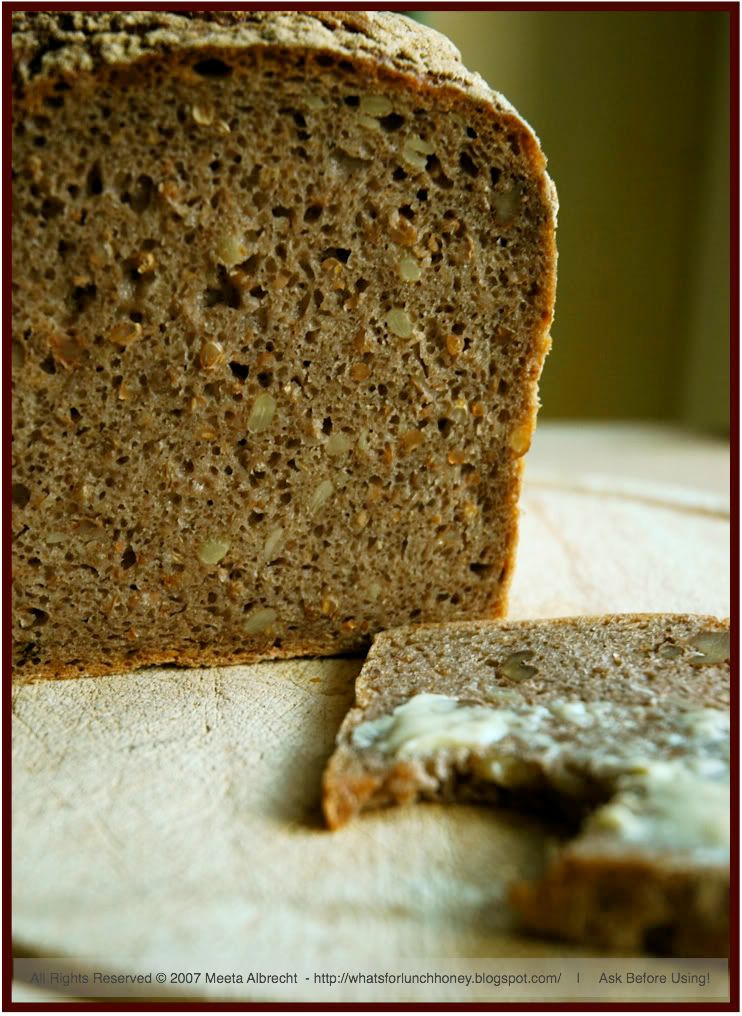
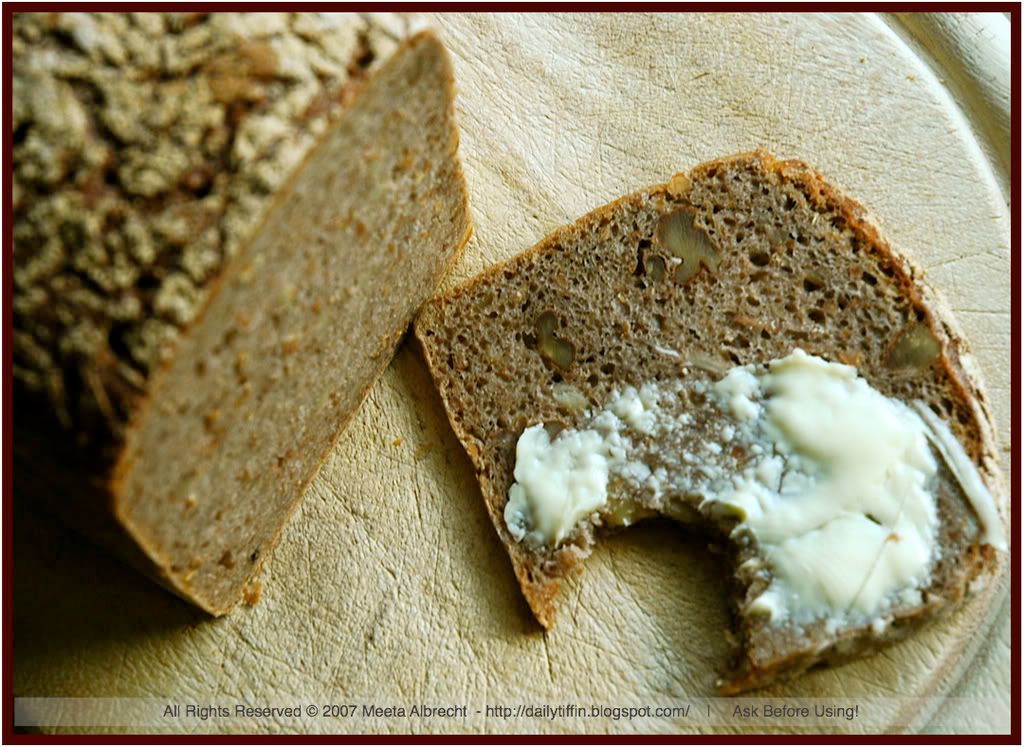










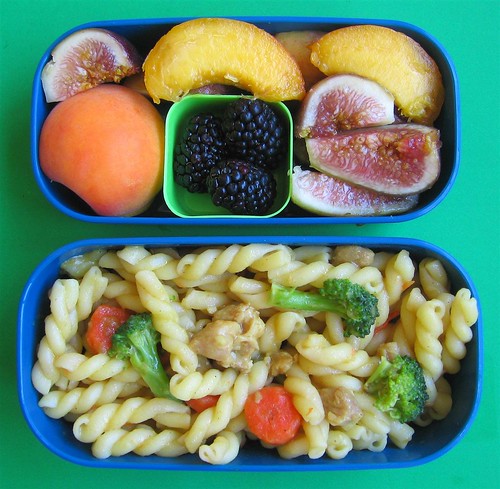

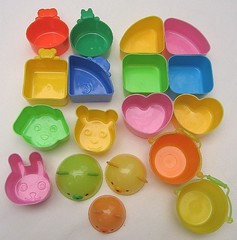
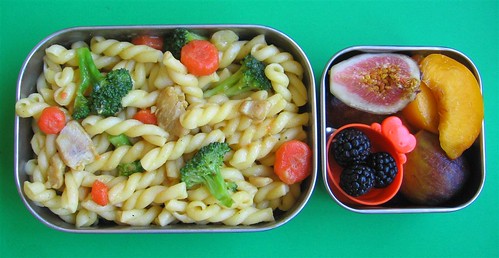
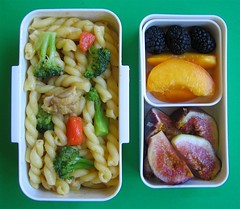
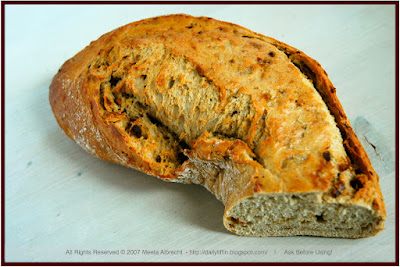














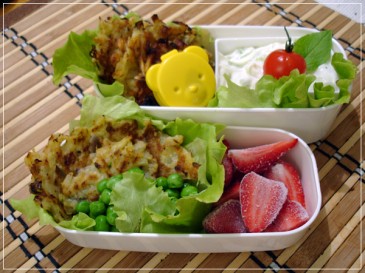
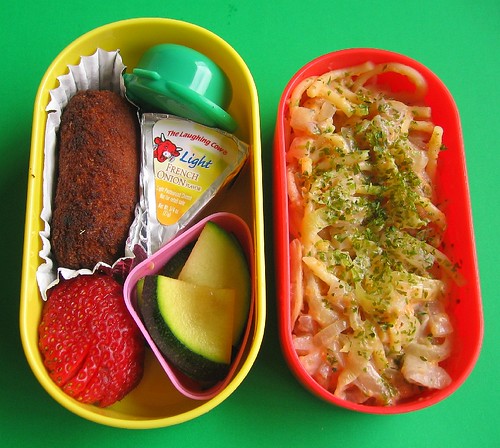
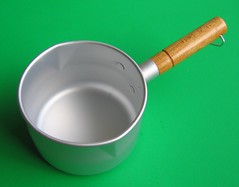 Morning prep time: 10 minutes. The spaghetti was leftover from the previous night's dinner, so I packed that up directly into the lunch container after dinner. I cooked two things in the morning: teamed the zucchini quickly in my microwave steamer (then tossed with my favorite ponzu sauce), and fried the frozen Goya-brand croquettes in a tiny pot. In Japan many lunch-packers have a tiny little pot for boiling or frying small amounts of food. The pot on the left is only about 4 inches in diameter (1 quart at max), so it was a good size to deep fry just three croquettes without using much cooking oil. Any small pot would work as well -- it saves on oil use and cleanup to work in miniature when frying.
Morning prep time: 10 minutes. The spaghetti was leftover from the previous night's dinner, so I packed that up directly into the lunch container after dinner. I cooked two things in the morning: teamed the zucchini quickly in my microwave steamer (then tossed with my favorite ponzu sauce), and fried the frozen Goya-brand croquettes in a tiny pot. In Japan many lunch-packers have a tiny little pot for boiling or frying small amounts of food. The pot on the left is only about 4 inches in diameter (1 quart at max), so it was a good size to deep fry just three croquettes without using much cooking oil. Any small pot would work as well -- it saves on oil use and cleanup to work in miniature when frying.






